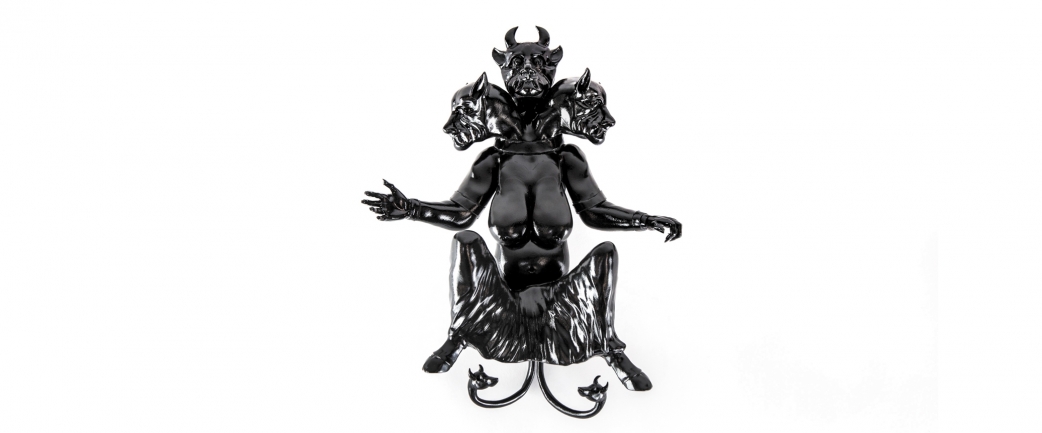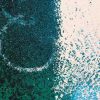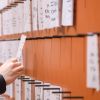
In her virtual and object-based artworks, the New York–based, new media artist Morehshin Allahyari reimagines future landscapes, inventing new narratives while transcending the boundaries of gender, sex, and race. Born in Tehran, Iran, in 1985, Allahyari is also an educator, curator, and activist. She appropriates imagery from her own personal and cultural mythology and critically questions the present while contemplating the future.
I spoke with Allahyari to discuss her most recent project, She Who Sees the Unknown (2017–18), which examines the dark goddesses, monstrous and djinn female figures of Middle Eastern origin. She “re-figures” these mythological creatures by creating them with 3D scanners and printers. Their “dark” femme powers are appropriated to fight the effects of colonialism and other forms of contemporary oppression. The work also incorporates elements of performance in the form of ritual ceremonies in which the artist activates her army of dark goddesses and propels them into our world. Allahyari’s archive of dark goddesses not only preserves, protects, and celebrates their feminine powers but also secures their relevance for future generations.
—Anna Cahn, Curatorial Assistant, Rubin Museum
Anna Cahn: What is the “unknown” element in your work She Who Sees the Unknown?
Morehshin Allahyari: Djinn (Arabic for genies) have a very specific place in Islamic culture. A djinn can be evil and good at the same time, or choose to be one or the other. It can make decisions for you, it can read your future, and it can influence your future. So the unknown is this element of future reading and having an awareness of things that regular people don’t. It’s information only available in this other world.
What is the significance of using 3D scanning technology in your most recent work?
When I 3D scan the data it comes to life pixel by pixel. There is a certain kind of magic embedded in these technologies. I’ve been doing a lot of research on digital colonialism and how these very technologies are being used as tools for colonizing different cultures and histories. We are now experiencing data ownership and data colonization in ways we haven’t before.
You use the terms “Digital Colonialism” and “re-Figuring Feminism.” Can you explain what these terms mean to you?
Digital Colonialism is a term that hasn’t really been used before; it’s not just about cultural or historical heritage, it can simply be the way Google Maps works, in terms of the way information is presented or hidden, and then access to that. You can use re-figuration as a powerful way of recreating and appropriating stories, images, and figures. I am specifically interested in re-figuration as this act of going back and looking at forgotten female figures from very old mythical ancient narratives and texts, and bringing them back. Through acts of re-figuration certain acts of decolonization can happen.
How does activism inform your practice, and how does your art inform your activism?
I don’t think about activism and art as separate spaces. Growing up in Iran until I was twenty-three, politics is so embedded in your everyday life, from the choice of the clothes you wear, to the food you eat, how you should be and behave. Growing up in a place like Iran, or now being an immigrant, we perhaps never had the privilege of not making work that’s not political. This is why I am an artist and why I am making art, because I want my work to challenge things, to go beyond the problems of the art world, to push things into real problems that we’re dealing with, not just what is aesthetically pleasing or poetic, but works that can have practical components to them.
I have heard you say that you believe in multiple futures. What does that mean or look like to you?
There needs to be multiple futures, or plural futures, at least more than one. I think it’s really problematic when we talk about the future and the future is always this image that we have that is defined for us, described by and anticipated by Silicon Valley. This whole idea of singularity and where things go in the years to come . . . that space is imagined by a very specific demographic, a specific group of people, and that means that a huge number of people, including people of color and the LGBTQ community, are always going to be excluded from that space. I believe that when there is a very small demographic of people imagining a future it is always going to be limited to what they know and what they think are the problems of the world. This is why I think it is really important to talk about reimaging that space and rethinking that future, but also encouraging this idea of plural singularity, plural futures. I think that is the way to invade that very image of the future—to suggest other ways and alternative futures.
FEMININE FUTURE AT THE RUBIN
The phrase “feminine future” heralds a shift from the historically dominant patriarchal worldview. It has gained speed as feminism moves toward intersectionality: the idea that the fight for women’s equality depends on fighting similar injustices tied to race, religion, or gender. In 2018, the Rubin will host a performance art series featuring three artists presenting in-progress works centered on the theme of alternative futures. These artists draw attention to traditionally marginalized stories, generating new pathways toward freedom and inclusivity, and they include elements of activism and pragmatism in their practices, invoking a sense of immediacy while anticipating the possibility of a different future.
About the Contributors
Morehshin Allahyari is an Iranian artist, activist, and educator. Her modeled, 3D-printed sculptural reconstructions of ancient artifacts destroyed by ISIS, titled Material Speculation: ISIS, have been exhibited worldwide and received widespread curatorial and press attention. She is the recipient of the Leading Global Thinkers of 2016 Award from Foreign Policy magazine, and has shown her work at the Queens Museum, Tate Modern, Venice Biennale di Architettura, and Centre Pompidou, among others.
Anna Cahn is a curatorial assistant at the Rubin Museum of Art. She is the lead organizer of a performance series at the Rubin in which three artists will present in-progress works centered around alternative futures. She received her BA from Clark University and an MA in art history with a concentration in museum studies from the City College of New York. She was awarded a summer residency as a research fellow at Stanford University in 2014.





